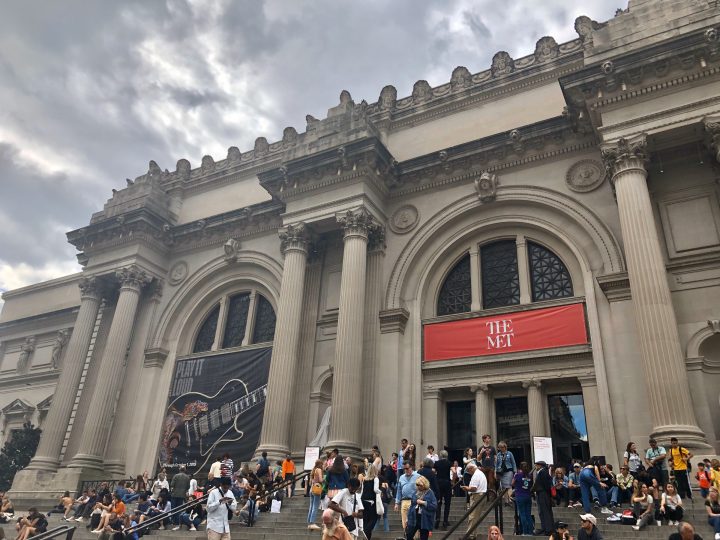
“Today is a good day for museums to die.”
Dr. Porchia A. Moore, Professor and Museum Scholar
Some claim that the museum is sick, that it is a body that requires healing and care in order to do its job, and that the violence we witness in the museum are symptoms of this illness. But the museum is not sick, it is a healthy body pursuing a sick goal, a goal of White, heteropatriarchal supremacy.
The new museum requires an ethical reorientation from our old ways of thinking, a divestment from a conservationist and capitalist ideology, and a centering of voices previously silenced by the colonial project. People and art deserve a better form of art stewardship.
As a reformed art historian and a White woman who likes to look, I know that the museum and its accompanying conversations can be stimulating and engaging for viewers. I move through museum spaces quite freely; I find deep pleasure in their halls. But that pleasure comes at a price I am no longer willing to pay. In order to move with intention, to create a caring and loving space for engaging with art, I ask myself and my peers to think deeply about what we are protecting when we protect the museum.
I am not advocating for the elimination of museum education work, nor for the removal of art from the people. I am for the elimination of the violence that the museum has consistently deployed against Black bodies, Brown bodies, gender non-confoming bodies, colonized bodies, queer bodies, immigrant bodies, disabled bodies, poor bodies, as well as violence against the cultures that these bodies create and move through. The violence of the museum is constantly put on display, mostly through the work of Instagram accounts and independent curators. Accounts such as @changethemuseum, @cancelartgalleries, and @artstuffmatters (run by LaTanya S. Autry, co-founder of Museums Are Not Neutral) disclose and discuss this violence over and over and over again.
Museums exert control over how we vision ourselves, past, present and future. They are the time loops that hold and hoard the works of art that can help us chart a course towards collective liberation. Through maintaining control of a broad swath of artworks and artifacts the museum maintains control of the tools that we use to tell stories about ourselves, the tools we use to think about what we can be.
There is an opportunity in the abolition of museums to create something caring and joyful. Care and joy are the necessary springboards of our new museums. Abolition will look like many things: repatriation of artworks and artifacts that have been stolen, paying community members and cultural workers to create repatriation processes that are less about legality and more about repairing harm, cutting ties with the board of directors, creating community guidance councils, opening up museums for housing and shelter, making entrance to museums free, and allowing people to curate shows that are meaningful to them. These are just a few ideas for how to make a start. This work is necessarily a collective project, collaborative and challenging. Museum abolition asks us to reckon with what we understand to be art works or objects of study and how we engage in the practice of ownership, how this ownership relates to care, and how we can look at things and attempt to understand that which we do not control or own.
There are museum workers and museums out there that are already moving in abolitionist ways. The Allen Memorial Art Museum at Oberlin College invites community members to rent works of art for their offices and homes each semester. The Museum of New Zealand Te Papa Tongarewa has developed a repatriation program rooted in Maori understandings of stewardship and guided by iwi representatives. The podcast, Exhibiting Kinship, holds space for generative conversations about the power and impact of indigenous museum workers and on the ways museums work.
Lending works to people’s homes and classrooms, making repatriation a priority, centering the work and voices of indigenous peoples — these are all ways to do the work of abolishing the museum. Let’s do this transformative work together. We, as community members and art stewards, have a responsibility to chart a way out of the museum as we know it and into something that cares for the community it is located in. We have a responsibility to produce spaces that promote a sense of wellness and wholeness among all participants. The new museum should be productive of experiences that are valuable to the communities in which they live, that center the needs and voices of the community members they serve.
0 Commentaires